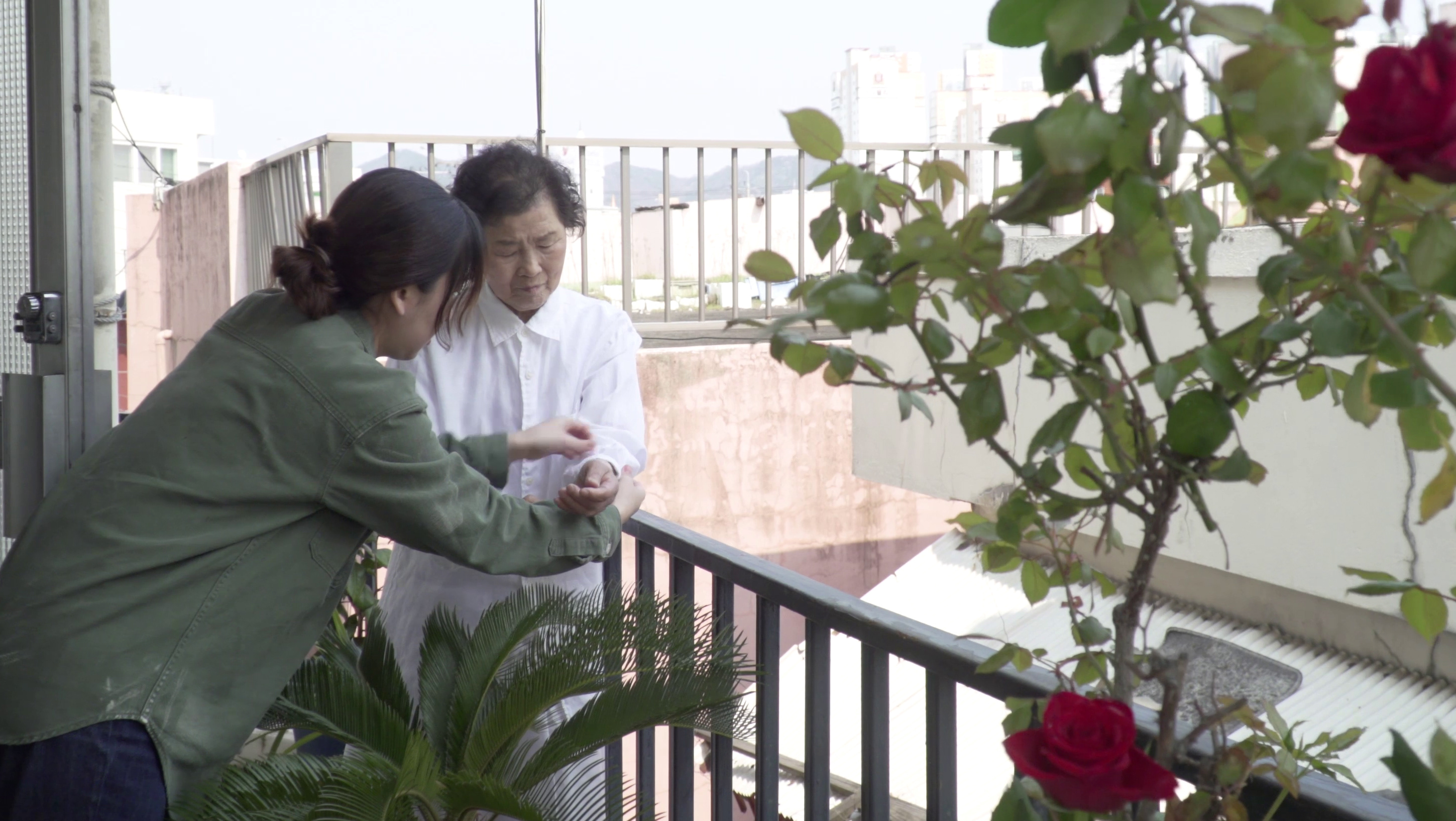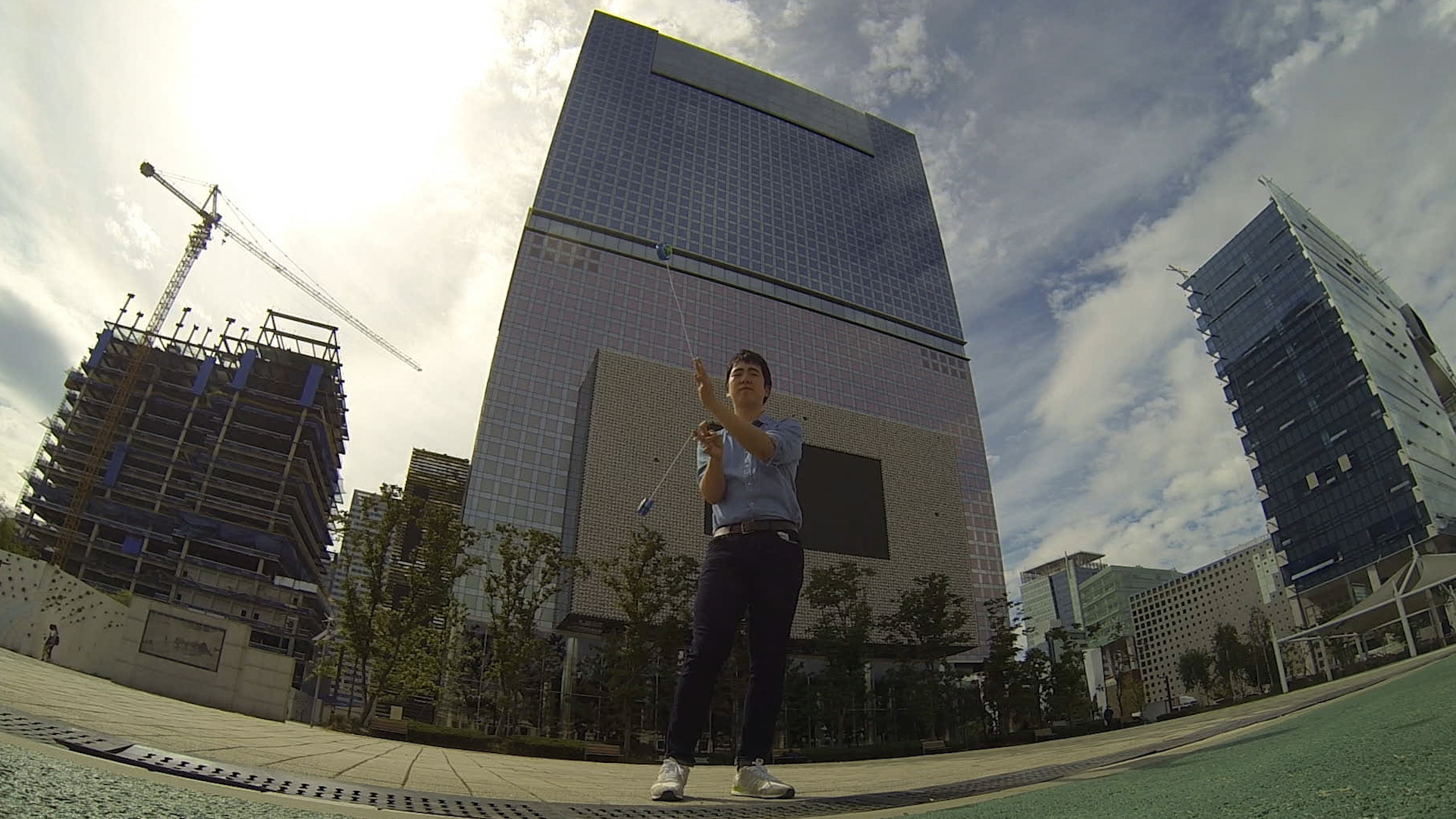Bright Future Review 브라이트 퓨처 리뷰
과거에 대한 새로운 시각을 추구하는 이 영화는 돌고 돌아 다시 냉전의 문턱에 서 있는 오늘날의 지정학적 긴장 환경에서 이전 세대 청년들의 경험을 되돌아보며 국제적으로 연대하는 것이 무엇을 의미하는지에 대해 질문한다. 대다수가 아카이브 영상으로 구성된 <브라이트 퓨처>는 혁명적인 변화 직전의 이념적 열광과 인간적 만남의 기이한 공존을 회상한다. 다양한 출처를 기원으로 하는 생소한 보관 영상 안에서는 거대한 체제 선전 카드섹션과 거리 환영 인파, 환희에 찬 댄스파티, 절도가 넘치는 사열 의식, 유혈이 낭자한 격파 시범이 교차한다. 이미지 연상의 예술은 예상치 못한 방식으로 차우셰스쿠 독재의 악몽을 아시아의 철권통치 국가에서 행해진 추상적인 퍼레이드와 엮는다. 장엄한 이 선전의 발레는 민중이 견뎌낸 억압과 부조리에 대한 시각화이다. 스타디움의 확성기를 통해 반자본주의 구호가 울려 퍼지는 가운데 혼연일체의 행진을 보여주는 집체의 예술은 신중하게 큐레이팅된 이미지였다. 이 지점에서 <브라이트 퓨처>는 독재국가의 광기를 시각적 창의성을 가지고 분석하는 루마니아 뉴웨이브의 전통을 잇는다. 성실한 조사와 섬세한 배열만으로 훌륭한 영화가 될 수 있다는 것을 입증한 안드라 맥마스터스 감독은 냉전과 독재의 최종 장(場)에서, ‘밝은 미래’를 예감케 하는 세계적 만남의 장소를 되살려낸다.
Seeking a fresh perspective on the past, the film turns around and reflects on the experiences of previous generations of youth and questions what it means to stand in solidarity internationally in today's climate of geopolitical tension as we stand on the threshold of the Cold War. Composed largely of archival footage, Bright Future recalls the uncanny coexistence of ideological fervour and human encounters on the eve of revolutionary change. In unfamiliar archival footage from a variety of sources, huge sections of regime propaganda cards are juxtaposed with street welcoming crowds, jubilant dance parties, theft-fuelled death rituals, and bloody fighting demonstrations. In an unexpected way, the art of image association interweaves the nightmare of Ceauşescu's dictatorship with the abstract parades of Asia's iron-fisted states. This majestic ballet of propaganda is a visualisation of the oppression and injustice endured by the people. The collective art of the march in unison, with anti-capitalist slogans blaring through the stadium's loudspeakers, is a carefully curated image. At this point, Bright Future continues the Romanian New Wave tradition of analysing the madness of dictatorships with visual creativity. Proving that diligent research and careful arrangement can make a great film, director Andra MacMasters recreates a global meeting point in the final chapter of the Cold War and dictatorship that foreshadows a 'bright future'.
by 장병원 Byungwon Jang, (DMZ Docs Programmer, Cine 21, http://m.cine21.com/news/view/?mag_id=106519&fbclid=IwY2xjawHDsDlleHRuA2FlbQIxMAABHUjKzfTxqPfUgH6LZijdeTj--yPwP8a5FXwLvF3iHzHJtzeNopHhTo3vhA_aem_Tjx0SFHfG3Oqb7CeLDe7nw)
Bright Future‘s vivid recreation of the sensory and emotional atmosphere of the festival is its premiere strength. Its grandiosity verges on the surreal. But not unlike the nationalist pageantry of the country’s present. While the film successfully acknowledges the allure of such a utopian gathering, it never lapses into nostalgia—although, for an experiential wanderluster like me, it presents something that would surely have been attended. Instead, it quietly and confidently presents its subjects without production or editing fanfare. It is a snapshot of a singular event at a singular moment. The festival provided the opulence, while the film offers its context.
페스티벌의 감각적이고 감성적인 분위기를 생생하게 재현하는 것이 브라이트 퓨처의 가장 큰 강점입니다. 그 웅장함은 초현실에 가까워집니다. 그러나 현재 이 나라의 민족주의적 축제와는 다릅니다. 영화는 이러한 유토피아적 모임의 매력을 성공적으로 인정하면서도 결코 향수에 빠지지 않습니다. 저와 같은 경험적 방랑자에게는 분명 참석했을 법한 무언가를 제시합니다. 대신 화려한 연출이나 편집 없이 조용하고 자신감 있게 주제를 전달합니다. 단 하나의 순간, 단 하나의 이벤트에 대한 스냅샷입니다. 축제가 화려함을 제공했다면 영화는 그 맥락을 제공합니다.
by Steve Rickinson (Film Critic, Modern Times Review, https://www.moderntimes.review/bright-future/?fbclid=IwY2xjawG3btNleHRuA2FlbQIxMAABHZ9Tyk2v9WlCUzyWz1y8Z7550mNXq5Q7TQhZqEdp230wU985scvFV3oWdg_aem_K4bszKKFFe56ereWaaNQ3g)
In the summer of 1989, the 13th edition of the World Festival of Youth and Students was held in Pyongyang. Thousands of socialist youth from 177 countries celebrated their belief in a better society and international solidarity. Host country North Korea celebrated this huge event with parades, singing and dancing in the streets, and chanting crowds. But this could not hide the fact that there was unrest within the socialist world family. Some delegations criticized China, which had just brutally crushed the Tiananmen protests. Others felt that North Korea had hijacked the festival with showy propaganda. The event was documented from the inside by Emilian Urse, an amateur filmmaker and member of the Romanian delegation. The Romanian party members, who were pampered as guests of honor, were to segue into capitalism only a few months later, after dictator Nicolae Ceaușescu was deposed and executed. This makes Bright Future a fascinating historical document with unique footage. At the same time, it is remarkable how relevant the idealism of the festival youth of the time still sounds today.
1989년 여름, 평양에서 제13회 세계청년학생축전이 열렸습니다. 177개국에서 온 수천 명의 사회주의 청년들이 더 나은 사회와 국제적 연대에 대한 믿음을 축하했습니다. 주최국인 북한은 퍼레이드, 거리에서의 노래와 춤, 군중의 함성으로 이 거대한 행사를 축하했습니다. 하지만 사회주의 세계 안에 불안이 있다는 사실을 숨길 수는 없었습니다. 일부 대표단은 천안문 시위를 잔인하게 진압한 중국을 비판했습니다. 다른 이들은 북한이 화려한 선전으로 축제를 가로챘다고 생각했습니다. 아마추어 영화 제작자이자 루마니아 대표단의 일원이었던 에밀리안 우르세는 이 행사를 내부에서 촬영했습니다. 귀빈 대접을 받았던 루마니아 당원들은 불과 몇 달 후 독재자 니콜라 차우셰스쿠가 퇴진하고 처형된 후 자본주의에 편입되었습니다. 따라서 '밝은 미래'는 독특한 영상이 담긴 흥미로운 역사 다큐멘터리입니다. 동시에 당시 축제에 열광했던 젊은이들의 이상주의가 오늘날에도 여전히 유효하다는 점도 놀랍습니다.
by IDFA Program Note (https://festival.idfa.nl/film/43b41755-a905-4f2b-a989-81ab7f4f70f3/bright-future/)






